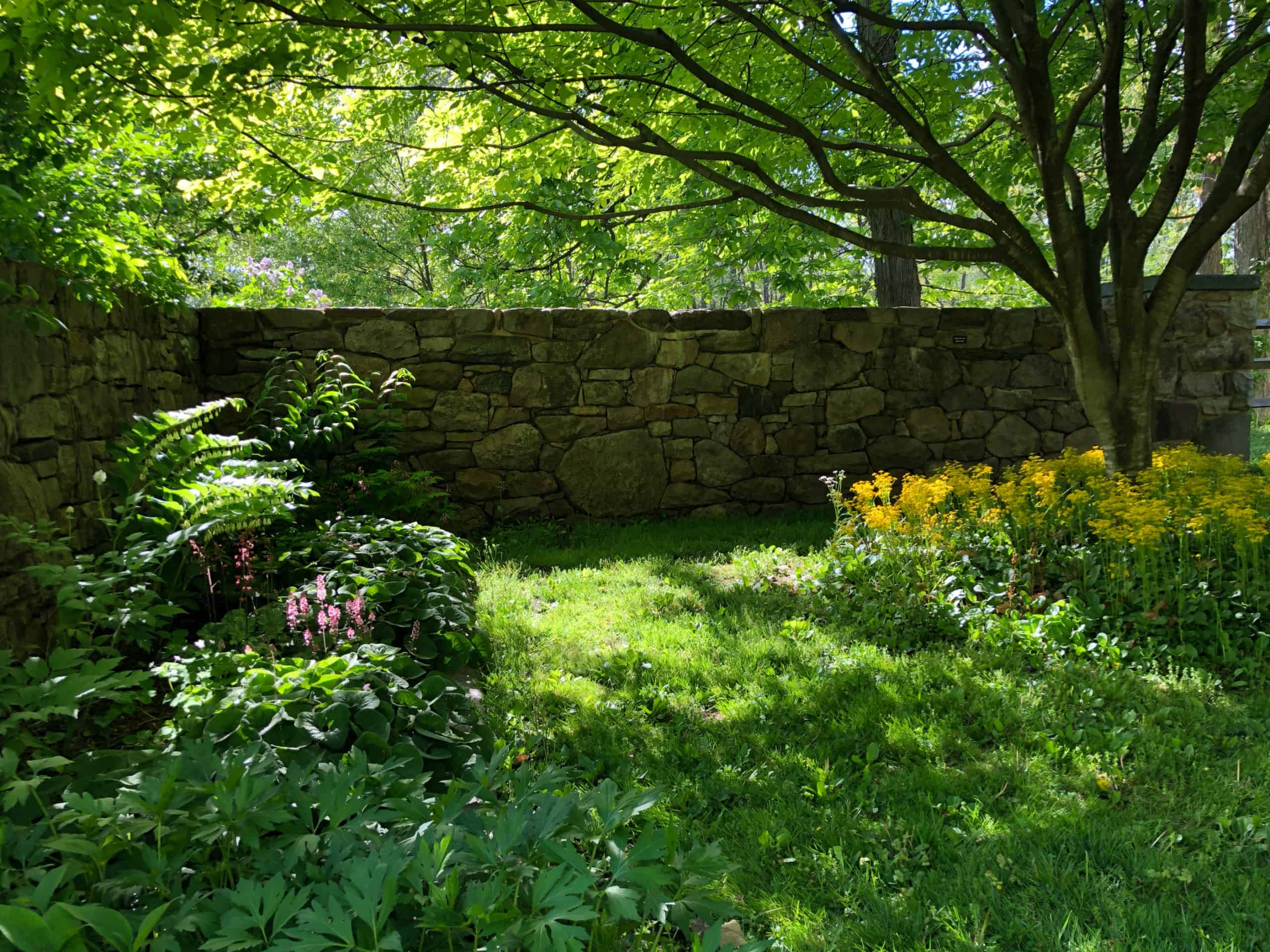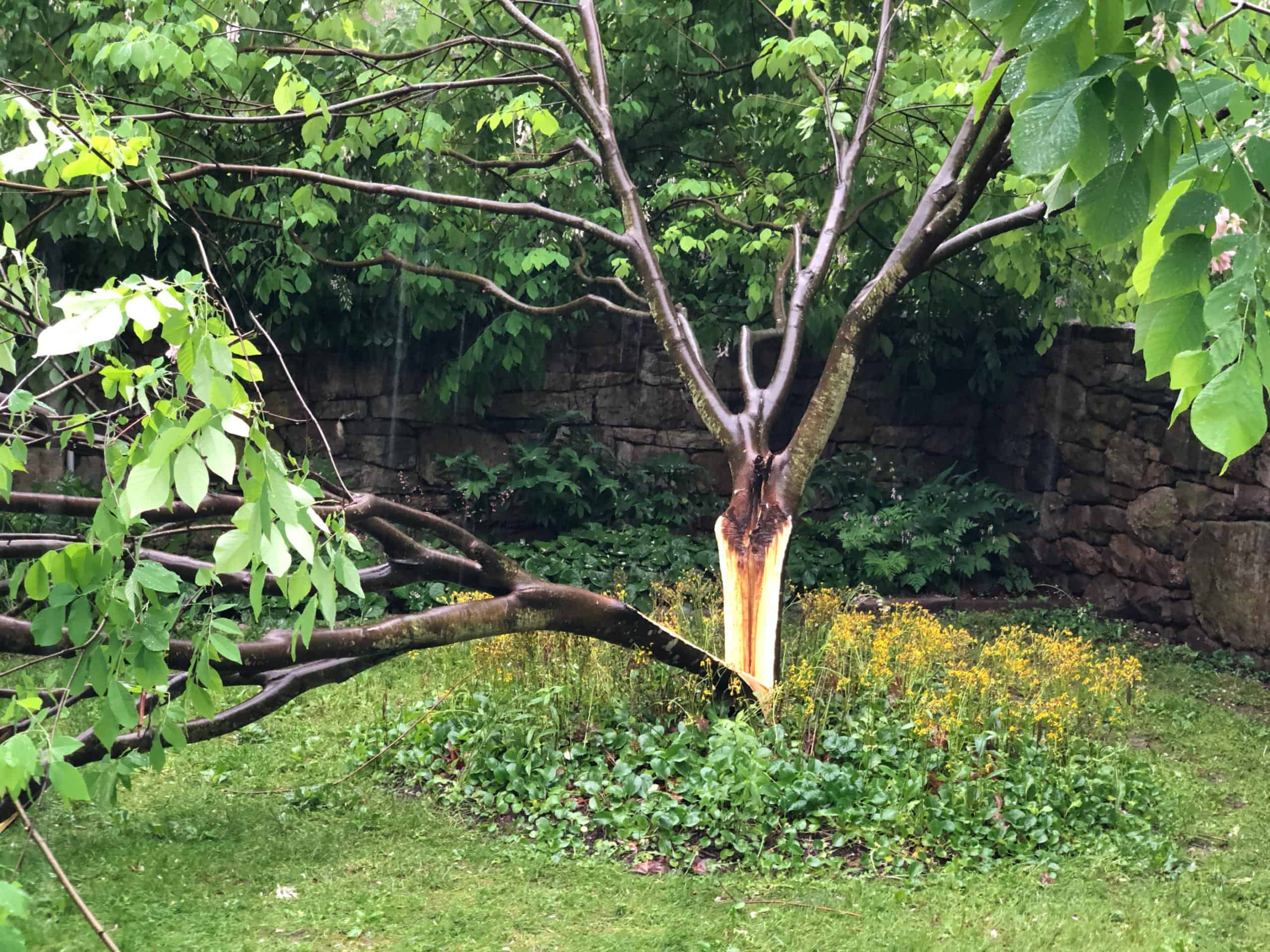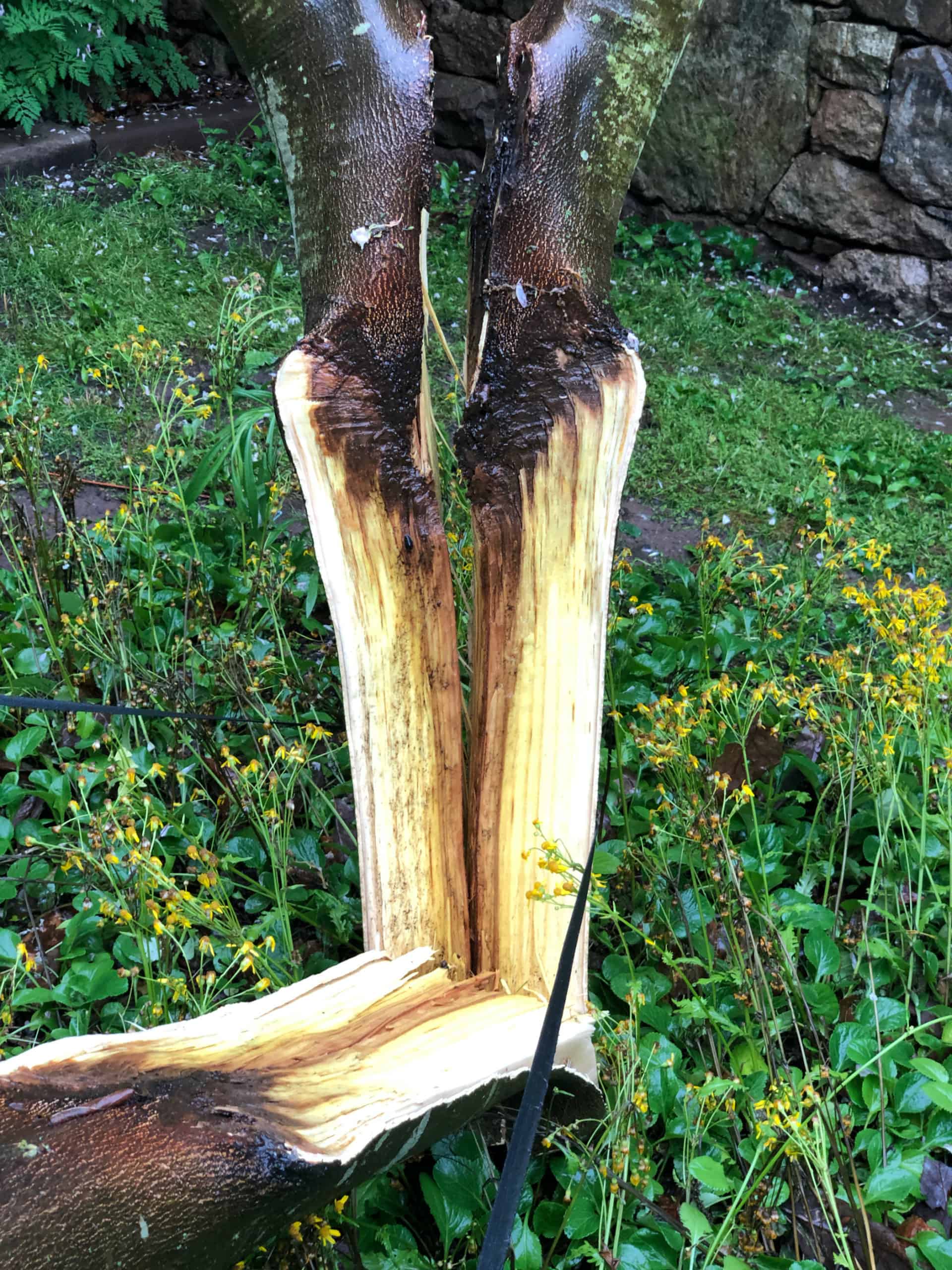Crow’s Nest: A Yellowwood Tribute
By Daniel Barringer, Preserve Manager.

Today we lost a specimen tree that has been appreciated by many preserve visitors: the yellowwood (Cladrastis kentukea), likely the cultivated variety ‘Perkin’s Pink.’ Above, the small tree creates an enclosed, shaded room in one corner of the barnyard. Aubrey underplanted it with Packera (Packera area) and renovated an overgrown bed of native wildflowers.
Yellowwood isn’t native to our immediate area, but is sparsely found in Kentucky, West Virginia, North Carolina, Tennessee, Missouri, Alabama, and west to Oklahoma. Even when not in flower, when it has white or pink wisteria-like fragrant flowers, people have admired the multi-trunked form, size, and shade. For years I’ve been warning people to enjoy it now, as I pointed out the multiple poorly-formed crotches in the trunk, likely to fail. We considered cabling or other short-term solutions but in the end decided to let it go. Yesterday was the last day of our spring kids’ programs that meet in the barnyard and many stopped to smell the flowers. Last night’s deluge of rain made the branches too heavy for the trunks to bear.

The fact that more than one crotch had a crack suggests that it is a genetic propensity of the species (or, perhaps cultivar), and not an isolated problem associated with some past mechanical damage. A few tree species are prone to weak crotches, sometimes caused by “included bark” where the narrow angle of the crotch inevitably pushes the branches apart each year as a new layer of cambium is added.
Today’s lesson: appreciate what you have while it is here, because nothing lasts forever.
Despite the potential for this flaw, I like yellowwood enough that I planted another one just up the road in my own yard. I’ll keep an eye on the trunk development, and will be sure to enjoy it every day.

